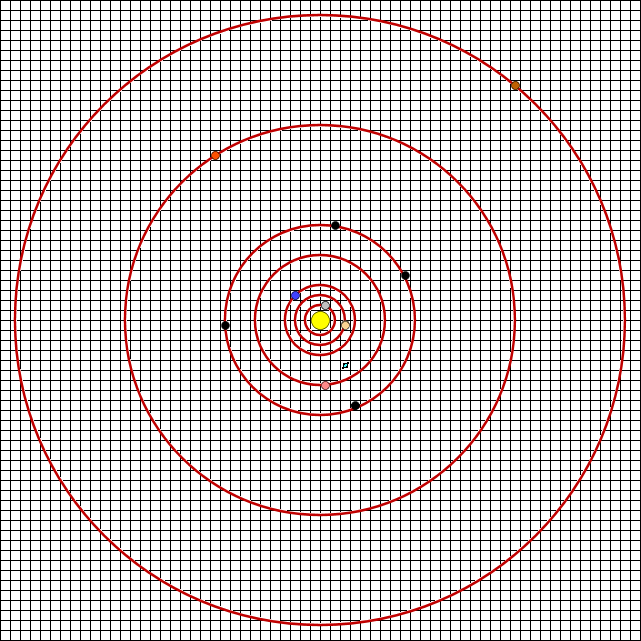BDS Software
Stellar System Thoughts - Page 1
Let's start thinking about how to model a stellar system for game purposes.
For simplicity (since we don't actually, even today, know too much about other systems), let's start with our own Solar System.
And, to simplify our model even further, lets assume that all orbits are circular with the Sun at the center, and that all of the orbits are in the same plane. (So, at least at first, we can completely ignore Kepler's Equations - YAY!)
Several years ago, from various sources which I didn't document at the time, I assembled some basic orbital data which will serve our initial purposes here.
In the following table:
● PPlanetNum = Orbit Number beginning with closest to Star and ending with furthest from Star.
● PID = Planet Name or ID.
● PDistance = Mean Orbital Distance (Semimajor Axis = Radius of Circular Approximation), AU * 1000 = milli-AU.
● PPeriod = Length of Orbital Year, Earth Days.
PPlanetNum PID PDistance PPeriod 1 Mercury 387 87.97 2 Venus 723 224.7 3 Earth 1000 365.25 4 Mars 1524 687 5 Flora 2202 1194 6 Vesta 2362 1325 7 Iris 2385 1345 8 Metis 2387 1347 9 Hebe 2426 1380 10 Astraea 2573 1508 11 Juno 2672 1595 12 Ceres 2766 1680 13 Pallas 2772 1686 14 Hygiea 3138 2031 15 Jupiter 5204 4333 16 Saturn 9582 10759 17 Uranus 19229 30799 18 Neptune 30104 60190 19 Pluto 39264 90613
Now, suppose we want to represent this stellar system on a 641 x 641 pixel grid, something vaguely like this:

A few things immediately become clear:
● We can't make the image of the Stellar System much larger than 641 x 641 pixels because, then, it won't all fit on one screen. Even as it is, some browsers on some laptops have to be put into Full Screen mode in order to see the entire image all at one time.
● With the images of the planets (and ships) restricted to the 10 x 10 pixel grid shown, the planets and ships are right at the limit of visibility. Therefore, the right-click context menu mechanism (or something similar) will have to be used to portray any significant information about the ships and planets.
● Even with these image dimensions right out to these limits, the orbit of Neptune will barely fit at a scale of 1 pixel = 100 milli-AU, and the orbit of Pluto will NOT fit. Since stellar systems other than our Solar System may be even larger in extent, some selective compression of the scaled orbits will be necessary in order to fit them all in.
BTW, students will get an extra 5 points if they recognized "selective compression" as a model railroading term :-)
And, yes, that's another 5 points for those who recognized the Seniors' emoji.
M.D.J. 2018/07/09